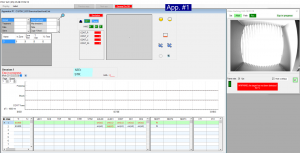The Gradual Changing Context Fear Conditioning (G2C) is our latest evolution of the Fear conditioning apparatus. Several components of the context may be modified in a continuous manner within an experimental session.
The main idea with this apparatus is to condition an animal to experience electric shocks in a context A, composed of an ensemble of elements (shape of the chamber, odor, lights, sound). At the beginning of the test session, another context B is defined with contextual elements, which are different from the elements of the fear-conditioned context A. Then each of the components of the context may be changed slowly one after the other, to analyze their involvement in the fear conditioning. In parallel, our apparatus can send electrical signals to synchronize behavioral events with electrophysiological recordings.
To combine technologies with behavior, use our movement compensator and rotary joints with the G2S.
The G2C is a very high-tech apparatus to analyze Fear conditioning, in which the different elements of the context can be adjusted continuously, contrarily to most other fear conditioning systems, in which elements are just activated or deactivated. These analog components are:
The apparatus is composed of:
All these upgrades allow changing the components of the context in a continuous way within an experimental session.
The software that manages the G2C is similar to POLY_FEAR, which manages our classic Fear conditioning apparatus. POLY_G2C allows:
Le logiciel qui pilote l’appareil de G2C est similaire à celui qui pilote les appareils de Fear Conditioning classiques. Il possède en plus la possibilité de contrôler les composantes analogiques du contexte.
An additional software calculates output variables based on the raw data (which are accessible), for example:
The software extracts output variables in a Microsoft Excel data sheet.
We developed a wide range of solutions to combine the analysis of behaviors in our apparatus with other techniques.
To combine with electrophysiology, we propose:
In order to control an optogenetic source, we propose: